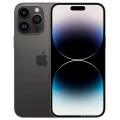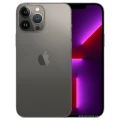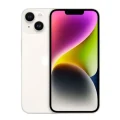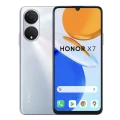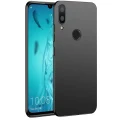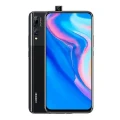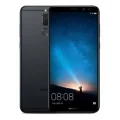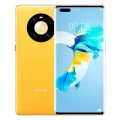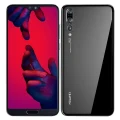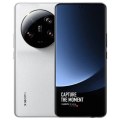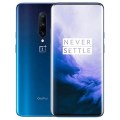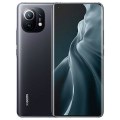- Awesome page
- Latest Mobile
- Smartphones
- Apple iPhone 14 Pro
Apple iPhone 14 Pro
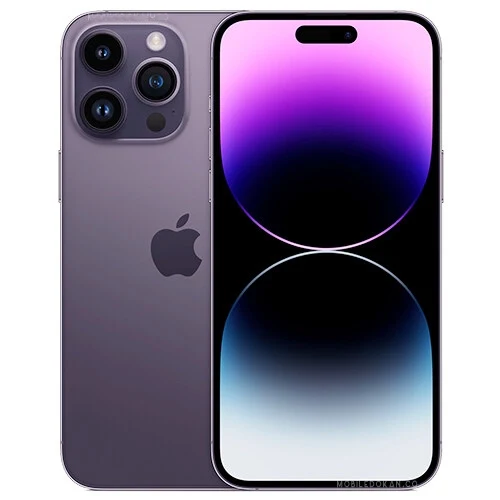

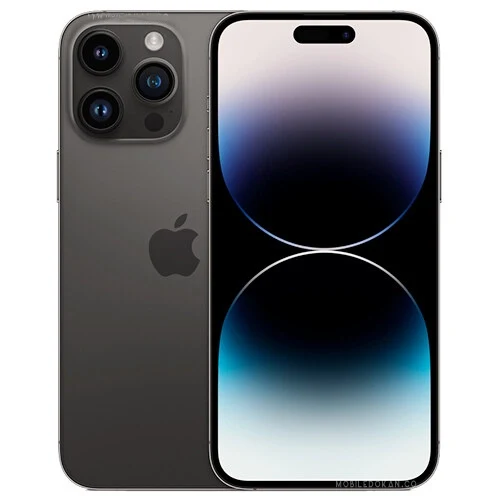
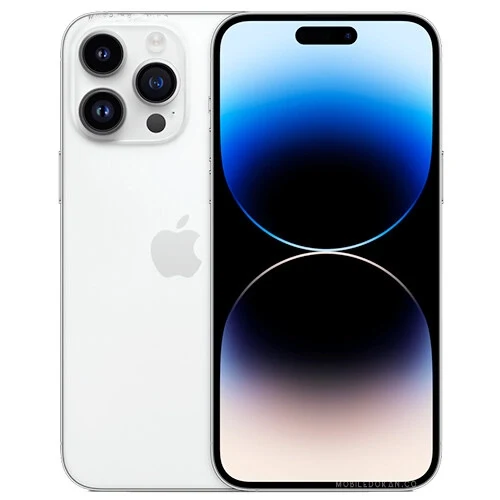
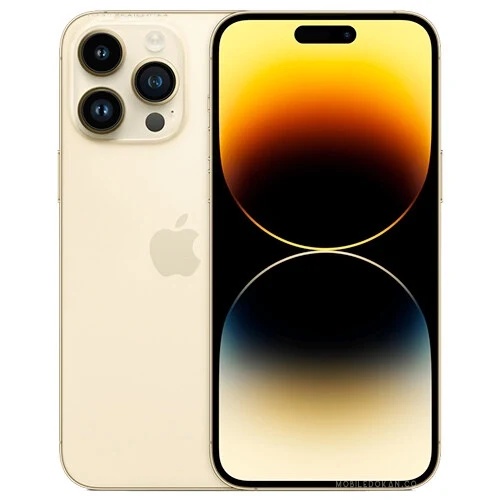

Apple iPhone 14 Pro Price in Bangladesh
The price of the Apple iPhone 14 Pro is BDT 183,499. It is available in four storage variants: 128GB/6GB, 256GB/6GB, 512GB/6GB, and 1TB. The device features a 3200mAh battery with fast charging, runs on iOS 16, and is powered by the powerful Apple A16 Bionic (5 nm) chipset.
Specifications
General
| Model | Apple iPhone 14 Pro |
| Announced | 07-09-2022 |
| Released | 16-09-2022 |
| Status | Available |
| Official price | 128GB ৳1,83,499 / 256GB ৳2,01,599 |
| Unofficial price | 128GB) SG ৳1,21,000 / 256GB SG ৳1,33,000 / 512GB ৳2,05,000 |
Design
| Dimensions | 147.5 x 71.5 x 7.9 mm (5.81 x 2.81 x 0.31 in) |
| Weight | 206 g (7.27 oz) |
| Colors |
Space Black, Silver, Gold, Deep Purple |
Network
| Technology | GSM / CDMA / HSPA / EVDO / LTE / 5G |
| 2G Network |
GSM 850 / 900 / 1800 / 1900 CDMA 800 / 1900 |
| 3G Network |
HSDPA 850 / 900 / 1700(AWS) / 1900 / 2100 CDMA2000 1xEV-DO |
| 4G Network |
1, 2, 3, 4, 5, 7, 8, 12, 13, 17, 18, 19, 20, 25, 26, 28, 30, 32, 34, 38, 39, 40, 41, 42, 46, 48, 66 - A2638, A2639, A2640 1, 2, 3, 4, 5, 7, 8, 11, 12, 13, 14, 17, 18, 19, 20, 21, 25, 26, 28, 29, 30, 32, 34, 38, 39, 40, 41, 42, 46, 48, 66, 71 - A2483, A2636 |
| 5G Network |
1, 2, 3, 5, 7, 8, 12, 20, 25, 28, 30, 38, 40, 41, 48, 66, 77, 78, 79 SA/NSA/Sub6 - A2638, A2639 1, 2, 3, 5, 7, 8, 12, 20, 25, 28, 29, 30, 38, 40, 41, 48, 66, 71, 78, 79, 258, 260, 261 SA/NSA/Sub6/mmWave - A2483 1, 2, 3, 5, 7, 8, 12, 20, 25, 28, 29, 30, 38, 40, 41, 48, 66, 71, 77, 78, 79 SA/NSA/Sub6 - A2636 |
| GPRS <strong>GPRS</strong> (General Packet Radio Service) is a packet oriented mobile data service on the 2G and 3G cellular communication system's global system for mobile communications (GSM), Generally, GPRS is used for the purpose of wireless data transfer, such as sharing pictures and videos or browsing the Internet via a mobile phone connection. | |
| EDGE <strong>EDGE</strong> (Enhanced Data GSM Environment) is a wireless network technology generally considered the next step in the 2G network offers data transfer rates up to four times faster than ordinary GSM networks, Generally, EDGE is used for the purpose of wireless data transfer, such as sharing pictures and videos or browsing the Internet via a mobile phone connection. | |
| Speed | HSPA 42.2/5.76 Mbps, LTE-A, 5G, EV-DO Rev.A 3.1 Mbps |
Display
| Display Type <strong>Display Technology => </strong> A number of display technologies and types used in mobile phones => TFT (Thin Film Transistor), IPS (In-Place Switching), OLED (Organic Light Emitting Diode), AMOLED (Active-Matrix Organic Light-Emitting Diode), Super AMOLED (an even advanced version of AMOLED), Resistive Touchscreen (Resistive touchscreens contain two layer of conductive material with a very small gap between them which acts as a resistance), Capacitive Touchsceen (Capacitive touchscreen technology consists of a layer of glass coated with a transparent conductor) | LTPO Super Retina XDR OLED capacitive touchscreen |
| Size | 6.1 inches, 91.7 cm2 (~87.0% screen-to-body ratio) |
| Resolution | 1179 x 2556 pixels, 19.5:9 ratio (~460 ppi density) |
| Features |
120Hz, HDR10, Dolby Vision, 1000 nits (HBM), 1200 nits (peak) |
Camera
Main camera
| Camera Setup | Triple |
| Primary <strong>Camera</strong> is able to capture photographs and usually videos, The most important characteristics of a camera are the resolution (measured in megapixels), lens focus type (fixed or automatic), higher megapixel cameras are known to capture higher quality photos, but not always a good measurement of the photos quality. |
48 MP, f/1.8, 24mm (wide), 1.22µm, dual pixel PDAF, sensor-shift OIS 12 MP, f/2.8, 77mm (telephoto), PDAF, OIS, 3x optical zoom 12 MP, f/2.2, 13mm, 120˚ (ultrawide), 1.4µm, dual pixel PDAF TOF 3D LiDAR scanner (depth) |
| Features |
Dual-LED dual-tone flash, HDR (photo/panorama) |
| Video | 8K@24/30fps, 4K@24/30/60fps, 1080p@30/60/120/240fps, 10-bit HDR, Dolby Vision HDR (up to 60fps), ProRes, Cinematic mode, stereo sound rec. |
Selfie camera
| Camera Setup | Single |
| Primary <strong>Camera</strong> is able to capture photographs and usually videos, The most important characteristics of a camera are the resolution (measured in megapixels), lens focus type (fixed or automatic), higher megapixel cameras are known to capture higher quality photos, but not always a good measurement of the photos quality. |
12 MP, f/1.9, 23mm (wide), 1/3.6&quot;, PDAF SL 3D, (depth/biometrics sensor) |
| Features | HDR |
| Video | 4K@24/25/30/60fps, 1080p@30/60/120fps, gyro-EIS |
Hardware
| Chipset <strong>Chipset</strong> is a group of integrated circuits designed to perform one or a more dedicated functions, often with real time computing constraints, Popular smartphones are equipped with more advanced embedded chipsets that can do many different tasks depending on their programming. | Apple A16 Bionic (4 nm) |
| CPU <strong>CPU</strong> (Central Processing Unit) mostly known as processors, CPU processes instructions in order to carry out certain functions that make your device operate properly. Processors are often described as the brain of computers, smartphones and tablets, Smartphones and tablets rely on processors to carry out their every task, Processors are an incredibly important factor in selecting any type of computing device, including your smartphone. | Hexa-core (2x3.46 GHz Avalanche + 4x Blizzard) |
| GPU <strong>GPU</strong> (Graphics Processing Unit) is a single-chip processor designed to rapidly manipulate and alter memory to accelerate the creation of images in a frame buffer intended for output to a display, This includes things such as lighting effects, object transformations, and 3D motion. | Apple GPU (5-core graphics) |
| RAM (Memory) <strong>RAM</strong> (Random Access Memory) is a type of computer memory that can be accessed randomly, any byte of memory can be accessed without touching the preceding bytes that allows information to be stored and accessed quickly from random locations. RAM is the most common type of memory found in computer systems, smartphones, tablets and other electronic devices. | 6 GB |
| Internal Storage <strong>Internal Storage</strong> is a data storage space (flash memory) mostly used in smartphones, tablets and other electronic devices where operating system, apps, music, photos, videos, files and other user data Is stored. | 128/256/512 GB / 1 TB |
| Sensors <strong>Sensors</strong> are electronic components that detects and responds to some type of input from the physical environment. The specific input could be light, heat, motion, moisture, pressure and location, The output is generally a signal that is converted to use in computing systems, a location sensor, such as a GPS receiver is able to detect current location of your electronic device. |
Face ID, accelerometer, gyro, proximity, compass, barometer Ultra Wideband (UWB) support Emergency SOS via satellite (SMS sending/receiving) |
Connectivity
| Bluetooth <strong>Bluetooth</strong> is a wireless communications technology for exchanging data between mobile phones, headsets, computers and other network devices over short distances without wires, Bluetooth technology was primarily designed to support simple wireless networking of personal consumer devices. | 5.3, A2DP, LE |
| Infrared <strong>Infrared</strong> connectivity is an old wireless technology used to connect two electronic devices. It uses a beam of infrared light to transmit information and so requires direct line of sight and operates only at close range. | |
| USB | Lightning, USB 2.0 |
| GPS <strong>GPS</strong> The Global Positioning System is a satellite-based radio navigation system, GPS permits users to determine their position, velocity and the time 24 hours a day, in all weather, anywhere in the world, In order to locate your position, your device or GPS receiver must have a clear view of the sky. | Yes, with dual-band A-GPS, GLONASS, GALILEO, BDS, QZSS |
| NFC <strong>NFC</strong> (Near field communication) is a set of standards for smartphones and similar devices to establish peer-to-peer radio communications with each other by touching them together or bringing them into proximity, usually no more than a few inches. |
Battery
| Battery Type <strong>Battery Type => </strong> Cell phones run on various kinds of batteries depending on the manufacturer, phone size or shape and features. There are basically four types of cell phone batteries => Lithium Polymer, Lithium Ion, Nickel Metal Hydride and Nickel Cadmium. | Non-Removable Li-Po |
| Capacity <strong>Battery Capacity</strong> is a measure (typically in Amp-hr) of the charge stored by the battery, and is determined by the mass of active material contained in the battery. The battery capacity represents the maximum amount of energy that can be extracted from the battery under certain conditions. | 3200 mAh |
| Charging Charging | Fast charging, 50% in 30 min (advertised), USB Power Delivery 2.0, MagSafe wireless charging 15W, Qi magnetic fast wireless charging 7.5W, |
Apple iPhone 14 Pro Review: A Complete Breakdown for Tech Enthusiasts
Apple’s latest flagship, the iPhone 14 Pro, marks another evolutionary leap for the brand, combining innovative technology with cutting-edge design to redefine what a smartphone can offer. Whether you’re upgrading from an earlier model or just curious about how far technology has come, this review will provide an in-depth look at the iPhone 14 Pro, covering its standout features, strengths, and where it stacks up in the competitive smartphone market.
Introducing the iPhone 14 Pro
When Apple announced the iPhone 14 Pro, it was clear the brand was determined to push boundaries. Equipped with the all-new A16 Bionic chip, a dynamic display technology called Always-On Display, and an enhanced triple-lens camera system, the 14 Pro represents the pinnacle of Apple’s design and engineering prowess. But does it truly live up to the hype? This review explores the impressive features of the iPhone 14 Pro and what sets it apart from both its predecessors and competitors.
iPhone 14 Pro Specifications at a Glance:
- Chipset: A16 Bionic (5 nm)
- Software: iOS 16
- Camera: Triple-lens system, including a 48MP main camera
- Display: 6.1″ Super Retina XDR with ProMotion
- Storage Options: 128GB, 256GB, 512GB, and 1TB
- Battery: 3200mAh with fast charging
- Starting Price: BDT 183,499 in Bangladesh
Now, let’s break it all down, one feature at a time.
Design and Build Quality
The earliest impression of the iPhone 14 Pro starts with its design, and it doesn’t disappoint. Crafted with surgical-grade stainless steel and textured matte glass, the build feels as premium as it gets. The phone retains its signature squared edges but reduces bezel thickness to maximize screen real estate—a subtle yet impactful improvement.
The device is also slightly heavier than its predecessor, reflecting the stronger materials and the larger battery inside. It’s available in gorgeous colors like Deep Purple, Gold, Silver, and Space Black, giving users both classic and modern aesthetic options. Notably, the ceramic shield on the front and back provides industry-leading durability.
Highlighted Design Features:
- Surgical-grade stainless steel frame for durability
- Water and dust resistance (IP68 rating)
- Four striking colors for variety
Display Technology
Apple has long been a leader in display technology, and the iPhone 14 Pro raises the bar. The 6.1″ Super Retina XDR display, combined with ProMotion technology, delivers stunning visuals and buttery-smooth responsiveness at a refresh rate of up to 120Hz.
The most exciting addition? The Always-On Display feature. This new functionality dims the lock screen to show essential information, such as the time and notifications, without eating into battery life too drastically. It’s a long-awaited feature for Apple fans who have seen similar functions on Android devices.
The display also boasts excellent HDR performance, making photos, videos, and games burst with lifelike color and crisp detail.
How it Compares:
- Color Accuracy: Improved over the iPhone 13 Pro, offering more vibrant and realistic hues.
- Brightness: Peaks at 2000 nits outdoors, making it one of the brightest displays in any smartphone.
Camera Capabilities
Photography fans will find plenty to love with the iPhone 14 Pro. The standout upgrade is the new 48MP main lens, which is capable of capturing stunningly detailed photos even in low-light conditions. Photonic Engine, Apple’s advanced image pipeline, improves every photo with better contrast and color reproduction.
For videographers, the 14 Pro introduces an innovative Action Mode for smoother, stabilized footage—even during intense motion. Cinematic Mode now supports 4K resolution at 30 fps, enabling professional-grade video recording.
Camera Highlights:
- Main Camera 48MP with advanced low-light capabilities
- Ultra-Wide Lens for breathtaking landscape shots
- Telephoto Lens allowing 3x optical zoom
- Action Mode for video recording on the move
Performance and Battery Life
The A16 Bionic chip is the beating heart of the iPhone 14 Pro, and it delivers blistering performance. Built using a 5-nanometer architecture, it’s faster and more efficient than the A15, enabling smooth multitasking and lightning-fast app performance, while supporting features like real-time video processing and gaming at a console-quality level.
Battery life has also seen small but meaningful improvements, with the 3200mAh battery lasting a day and a half under moderate use. Coupled with efficient power management via iOS 16, users can stretch use across multiple tasks without worrying about constant recharging.
Key Numbers:
- Performance: Up to 20% faster GPU compared to the A15 Bionic
- Battery: Supports up to 20 hours of video playback
User Experience with iOS 16
The iPhone 14 Pro comes pre-installed with iOS 16, packed with improvements that enhance the user experience. The new lock screen customization options make it easy to match your device to your personal style, and the updated Focus Modes ensure notifications stay relevant based on your activities.
Exclusive features like Dynamic Island—the new interactive notch—add a layer of functionality and flair. It morphs into a contextual hub, offering real-time updates from apps like music players, calls, or travel routes. It’s a small but impactful addition.
Pricing and Value
Priced at BDT 183,499 for the base 128GB model, the iPhone 14 Pro sits firmly in the premium range. While this price point may seem steep, the advanced technology and unparalleled user experience justify the investment for those seeking top-tier performance and innovation.
For comparison, other flagship competitors miss the mark on cohesive integration between hardware and software—Apple’s hallmark. If you value longevity, ease of use, and consistent updates, you’ll find the 14 Pro worth every penny.
Why the iPhone 14 Pro is Worth Your Consideration
The iPhone 14 Pro is more than just an incremental upgrade—it’s a statement about Apple’s ability to innovate while maintaining its core principles of design and usability. With standout features like the Dynamic Island, improved camera system, and unbeatable performance, it’s hard not to recommend it to anyone looking for a premium smartphone experience.
Who’s it for?
- Apple fans looking for the next big upgrade
- Photography enthusiasts
- Users seeking the best display and performance
If you’re considering making the leap, the iPhone 14 Pro sets a new standard, ensuring you’ll stay ahead of the tech curve.
